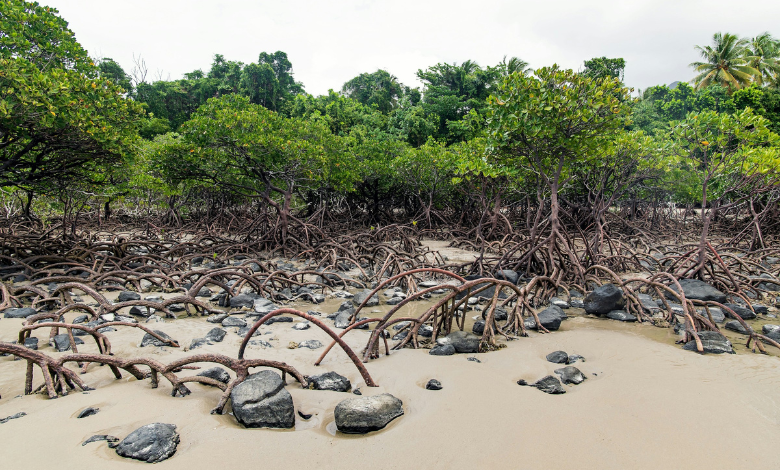Nature’s carbon storehouse at risk: human behaviour threatening 50% of mangrove forests on Earth

Half of all the mangrove forests on the planet are currently at risk of collapse, according to an analysis by the International Union for Conservation of Nature (IUCN). It is the first-ever expert assessment of these crucial ecosystems and carbon stores.
Released on May 22 on the International Day for Biodiversity, the report classifies the examined mangrove ecosystems as either Vulnerable, Endangered or Critically Endangered. Human behaviour is the primary cause of their decline, as per the study.
Researchers found that mangroves in southern India, Sri Lanka and the Maldives are most at risk. Systems in the central Pacific, South China Sea and the eastern Coral Triangle around Malaysia, the Philippines and Papua New Guinea have been classified as endangered.
Nature’s gigantic carbon storehouse at risk
“Mangrove ecosystems are exceptional in their ability to provide essential services to people, including coastal disaster-risk reduction, carbon storage and sequestration, and support for fisheries,” according to the chair of the IUCN commission on ecosystem management.
Found in several different places on the planet, mangroves include a number of different species of trees and shrubs along tropical coastlines. They act as shelter to a vast array of biodiversity. They support fish and mammals as varied as tigers and sloths.
Roughly 15% of Earth’s coastlines are covered by mangroves. Despite their size, these ecosystems store a gigantic amount of carbon, taking in almost three times the carbon stored by tropical forests of the same size, reported the Guardian.
Climate change threatening 33% of mangroves assessed
Mangrove forests are of immense use to us and the different species on the planet. But they are increasingly threatened by rising sea levels, agriculture, pollution such as oil spills, developments along coastlines and dams on rivers.
The risk to these ecosystems is increasing due to the aforementioned sea level rise and the increased frequency of severe storms linked to climate change. In fact, the brutal climate crisis is threatening 33% of the mangrove ecosystems assessed, according to the study.
Researchers have noted that, without significant changes by 2050, climate change and elevated sea levels will result in the loss of 1.8 billion tonnes of carbon stored (17% of the total current carbon stored in mangroves). Save mangroves to save life.
 Mangroves are lifelines for coastal communities and
Mangroves are lifelines for coastal communities and 



